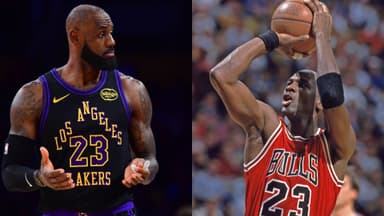Michael Jordan and his Chicago Bulls were the best basketball team in the world when at their peak. The 72-10 Bulls set the benchmark for regular season and post-season excellence in terms of quality and success alike.
Advertisement
However, the Bulls didn’t have it all smooth. Particularly when it came to team chemistry. The 90s for the franchise was a dramatic period with a lot of success and a major lull in the middle. Two three-peats and two Michael Jordan retirements formed the narrative for the decade.
The Bulls were firmly Michael Jordan’s team. And naturally, any drama or success surrounding the Bulls had to do with the involvement of the franchise star.
While his first hiatus from basketball hampered the rhythm and success of the Bulls, it was the resonance from the retirement rather than his absence itself that was more controversial. The circumstances even meant that there was a fight between MJ and teammate Steve Kerr.
However, the initial friction led to sparks that didn’t burn and instead fueled the Bulls. Or at least, so claimed their legendary coach, Phil Jackson in his book.
What did Phil Jackson reveal about the ramifications of the Kerr-Jordan altercation?
According to Phil Jackson, while the initial tension was worrisome, it turned out for the good of the team. Jordan, after his return from his baseball hiatus, wasn’t quite himself. There was something missing.
Well, whatever it was, a fight appeared to be what set things right. During a training session, a bust-up occurred and Michael Jordan and teammate Steve Kerr went at each other. At 6’3 despite being a good three inches short of Jordan, Kerr seems to have given a good account of himself.
Whether it was the fight a teammate showed that sparked something is unknown. But change was on the way, and His Airness was at the forefront of it.
“Beyond that, I think it’s essential for athletes to learn to open their hearts so that they can collaborate with one another in a meaningful way. When Michael returned to the Bulls in 1995 after a year and a half of playing minor-league baseball, he didn’t know most of the players and he felt completely out of sync with the team. It wasn’t until he got into a fight with Steve Kerr at practice that he realized he needed to get to know his teammates more intimately. He had to understand what made them tick, so that he could work with them more productively. That moment of awakening helped Michael become a
compassionate leader and ultimately helped transform the team into one of the greatest of all time” wrote coach Phil Jackson about the incident and how it changed everything in Chicago.
A lack of familiarity with new personnel and his taking time to fit back in definitely bothered Jordan and by extension, the Bulls. But the altercation with Kerr marked a shift in perception from the Bulls and their leader.
From a hard-nosed leader, Jordan marked a change into a compassionate one. And clearly, compassion was what this rendition of the Bulls needed from their leader. Another three-peat followed and then the “Last Dance”. Jordan entered his second retirement with double the rings he had compared to his last.
Why did Michael Jordan leave the Chicago Bulls in the middle of the 1990s?
After “losing his desire” to play the sport of basketball, Michael Jordan retired for the first time in 1993. This followed a series of events, including the death of his father. And to realize his father’s dream, his Airness decided to make a foray into pro baseball.
Despite signing with the Chicago White Sox, Jordan’s pro career was limited to their minor league affiliate, the Birmingham Barons. And it wasn’t quite the fairytale MJ envisaged.
After a few terrible showings, Jordan made the call to say goodbye to his second sport. Even though he did not reach the major league level, MJ was able to live his father’s dream momentarily. And clearly, not too far removed from basketball either, as three more championships followed the GOAT.







